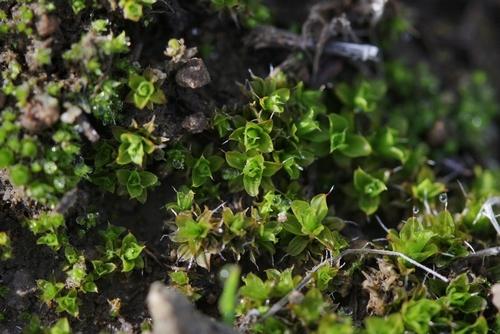
medium.JPG from: https://www.inaturalist.org/taxa/400138-Bryum-blandum
Bryum blandum subsp. handelii: A Fascinating Moss of the Bryaceae Family

large.jpeg from: https://www.inaturalist.org/observations/145017627
Introduction

silvergreen-bryum-moss-silvery-thread-moss-bryum-argenteum-growing-in-the-gaps-concrete-coping-slabs-germany-2k66gdx.jpg from: https://www.alamy.com/silvergreen-bryum-moss-silvery-thread-moss-bryum-argenteum-growing-in-the-gaps-concrete-coping-slabs-germany-image485722263.html
Today we’re diving into the wonderful world of mosses to explore a particularly interesting species: Bryum blandum subsp. handelii (Broth.) Ochi

macro-photo-sporophytes-bryum-moss-macro-photo-sporophytes-bryum-moss-white-background-183843288.jpg from: https://www.dreamstime.com/macro-photo-sporophytes-bryum-moss-macro-photo-sporophytes-bryum-moss-white-background-image183843288
. This tiny but mighty moss, also simply known as Bryum, is part of the Bryaceae family. Despite its small size, it plays important ecological roles and has some remarkable adaptations. Let’s learn more about this fascinating bryophyte!
Background on Mosses
Before we get into the specifics of Bryum blandum subsp. handelii, let’s review some background on mosses in general. Mosses are non-vascular plants in the division Bryophyta. Unlike other plants, they lack true roots, stems, and leaves. Instead, they have root-like rhizoids, stem-like structures called seta, and leaf-like structures called phyllids. Mosses reproduce via spores rather than seeds and are found in a wide range of habitats worldwide.
Morphology and Identification
Bryum blandum subsp. handelii is a small, tufted acrocarpous moss, meaning it bears sporophytes at the tips of the main stems. Its leaves are ovate-lanceolate and have a distinct border of elongated cells. The seta is reddish-brown and the capsules are pendulous and pyriform (pear-shaped). Identification of Bryum species can be tricky and often requires microscopic examination of leaf cell shape, capsule morphology, and other minute details.

macro-bryum-moss-pohlia-nutans-dew-drops-forest-floor-over-dark-green-background-mossy-plants-mosses-195543441.jpg from: https://www.dreamstime.com/macro-bryum-moss-pohlia-nutans-dew-drops-forest-floor-over-dark-green-background-mossy-plants-mosses-image195543441
Global Distribution and Habitat
This moss has a widespread distribution, being found in many regions around the world including Europe, Asia, Africa, and the Americas. It grows on various substrates such as soil, rocks, and tree bark in habitats ranging from lowland forests to alpine zones. Bryum blandum subsp. handelii is able to tolerate a fairly wide range of environmental conditions.
Ecological Roles and Adaptations
Like other mosses, Bryum blandum subsp. handelii plays several important roles in its ecosystems:
- Nutrient cycling: It helps capture and retain nutrients, making them available to other organisms.
- Moisture retention: Moss clumps help absorb and hold moisture, reducing runoff and erosion.
- Habitat provision: It provides shelter and habitat for tiny invertebrates and other microorganisms.
Bryum blandum subsp. handelii has several adaptations that allow it to thrive:
- Desiccation tolerance: It can survive periods of drying out by going dormant until moisture returns.
- Spore dispersal: Its lightweight spores are easily carried by wind to colonize new areas.
- Asexual reproduction: It can reproduce asexually via structures called gemmae, allowing populations to spread locally.
Conclusion
Bryum blandum subsp. handelii may be small, but it is a remarkable and important moss species. From its global distribution to its ecological roles and adaptations, this mighty moss proves that size isn’t everything in the plant kingdom. Next time you’re out in nature, take a closer look – maybe you’ll be lucky enough to spot some Bryum blandum subsp. handelii! What other mighty mosses have you encountered?